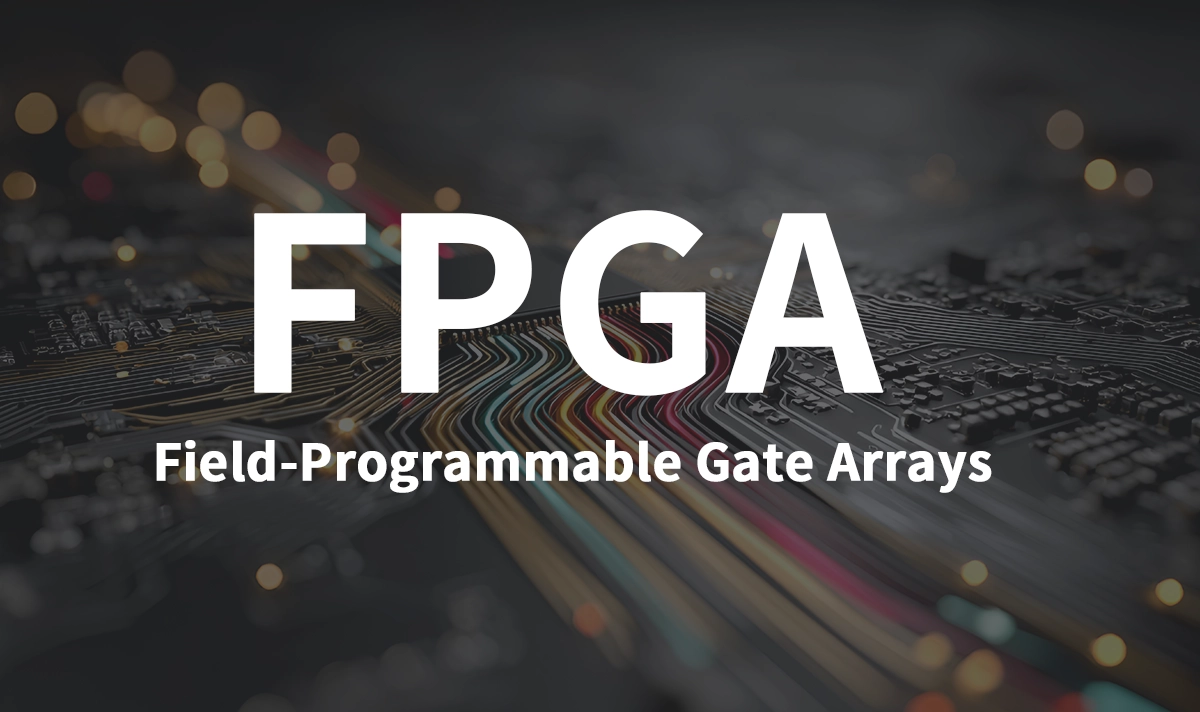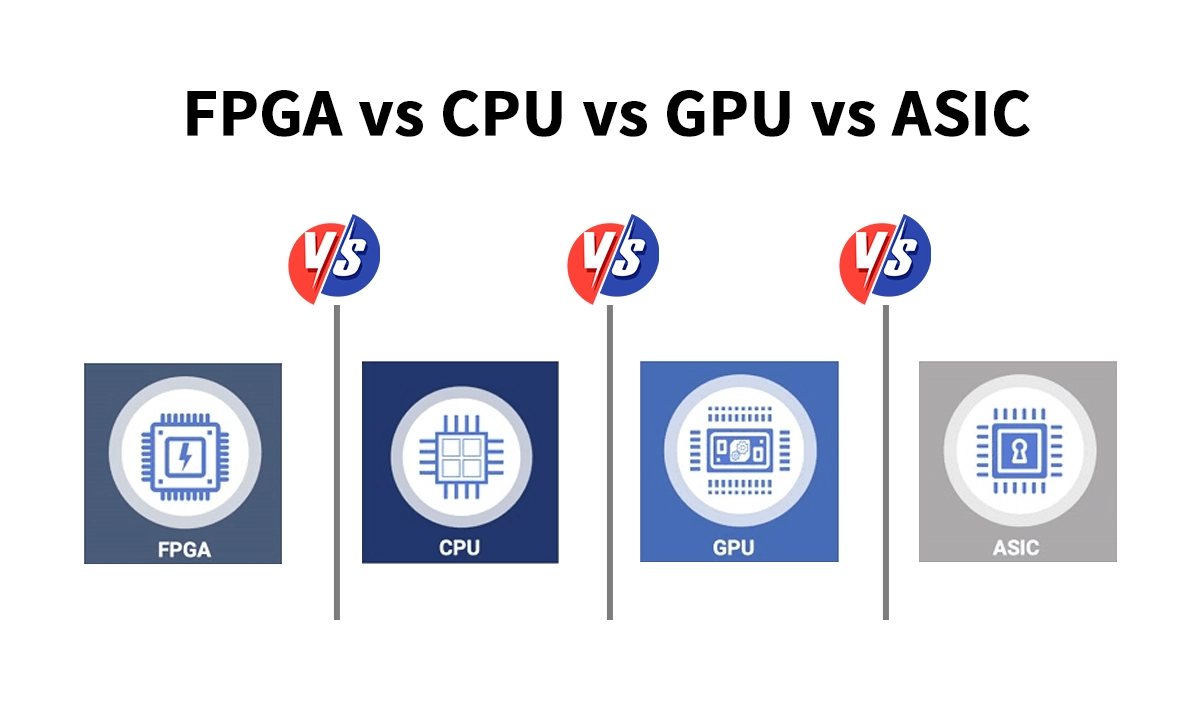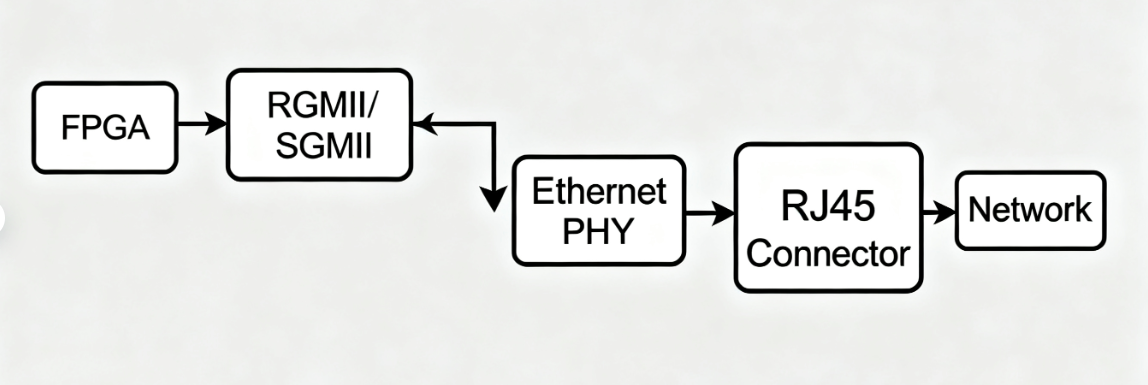
FPGAs (Field-Programmable Gate Arrays) are reconfigurable semiconductor devices designed for parallel digital logic processing, allowing engineers to implement custom hardware functions after manufacturing. Unlike CPUs or GPUs that follow fixed instruction sets, an FPGA’s logic can be configured using Hardware Description Languages (HDLs) such as Verilog or VHDL.
They are widely used in 5G telecommunications, high-speed networking, avionics, industrial automation, edge AI, and real-time signal processing.
▶ What Is an FPGA?
An FPGA is an integrated circuit composed of configurable logic blocks (CLBs), programmable interconnects, I/O blocks, embedded memory, and optional DSP slices or hardware accelerators. Engineers program the hardware behavior, enabling custom digital circuits optimized for performance, latency, and throughput.
In other words:
FPGA = Hardware you can rewrite and optimize for specific tasks.

▶ FPGA Architecture and Key Components
Core FPGA Building Blocks
FPGA Component | Function |
|---|---|
Configurable Logic Blocks (CLB) | Implement logic functions and arithmetic |
Look-Up Tables (LUT) | Create logic gates and combinational logic |
Flip-Flops / Registers | Store state and pipeline data |
Programmable Interconnect | Connect logic elements flexibly |
DSP Slices | Accelerate math operations (e.g., MAC, FFT) |
Block RAM (BRAM) | On-chip memory for buffering/data |
Transceivers (SERDES) | High-speed serial communication |
I/O Banks | Interface with external systems such as Ethernet PHY |
How FPGA Programming Works
FPGA bitstreams are generated via logic synthesis, placement, and routing tools. Typical workflow:
Algorithm/Logic Design → HDL/RTL Coding → Synthesis → Bitstream → FPGA Configuration
▶ FPGA vs CPU vs GPU vs ASIC

Feature | FPGA | |||
|---|---|---|---|---|
Programmability | Reconfigurable hardware | Software only | Software only | Fixed hardware |
Parallelism | Very high | Moderate | Very high | Application-specific |
Latency | Ultra-low | Moderate | Moderate | Lowest |
Energy Efficiency | High | Moderate | Moderate | Very high |
Time-to-Deployment | Fast | Fast | Fast | Long |
Best Use Cases | Real-time logic, networking, signal processing | General computing | Large-scale AI, graphics | Mass-volume fixed functions |
▶ Key FPGA Applications
1. Telecommunications & 5G
2. Industrial & Automation Systems
Deterministic Ethernet networks
PLC and motion control
Real-time sensor fusion
3. Networking & Data Centers
Network packet processing
Low-latency NICs and SmartNICs
Hardware-level security processing
4. AI and Edge Computing
CNN / DNN acceleration
Real-time video analytics
Embedded vision systems
▶ Why Ethernet Matters in FPGA Systems
Many FPGA-based products rely on Ethernet for deterministic communication, real-time data transfer, and system-level interoperability.
A common FPGA networking architecture:

FPGA → RGMII / SGMII → Ethernet PHY → RJ45 MagJack → NetworkThe Role of RJ45 MagJack in FPGA Designs
RJ45 MagJacks integrate isolation magnetics and EMI shielding, ensuring:
Stable high-speed Ethernet performance
Noise rejection and improved EMI/EMC compliance
Reliable signal integrity in industrial environments
Support for PoE (Power over Ethernet) in embedded systems
These features are critical for FPGA-based industrial controllers, edge gateways, robotics platforms, and real-time networking equipment.
▶ Recommended LINK-PP RJ45 MagJack Solutions for FPGA Platforms
LINK-PP provides integrated RJ45 connectors optimized for FPGA Ethernet designs.
Key Features for FPGA Systems
10/100/1000 Mbps Ethernet options
Integrated magnetics with EMI shielding
Industrial temperature range options (−40°C to +85°C)
PoE-enabled variants for power + data over one cable
High reliability for mission-critical environments
Example FPGA Use Cases
Application | Requirement | LINK-PP Solution |
|---|---|---|
Industrial PLC controllers | Robust Ethernet | |
Edge AI and smart vision | High-speed data + PoE | |
Telecom and baseband units | EMI-sensitive Ethernet | |
Embedded control platforms | Compact, integrated I/O |
▶ Conclusion
FPGAs enable custom, high-performance digital logic with exceptional parallelism, low latency, and deterministic processing—making them essential in telecom, industrial automation, AI edge computing, and high-performance networking. When paired with reliable Ethernet interfaces such as LINK-PP integrated RJ45 Jacks, FPGA systems gain robust connectivity, strong EMI performance, and optional PoE support for compact and efficient deployment.
▶ FAQ
Is an FPGA faster than a CPU?
Yes, for parallel real-time tasks. FPGAs deliver deterministic low-latency execution.
Can FPGAs replace GPUs?
Not in all cases. GPUs excel in AI training, while FPGAs are preferred for edge inference and real-time control workloads.
Why use an FPGA over an ASIC?
FPGAs offer reconfigurability, faster deployment, and lower upfront cost, making them ideal for evolving standards and iterative development.


